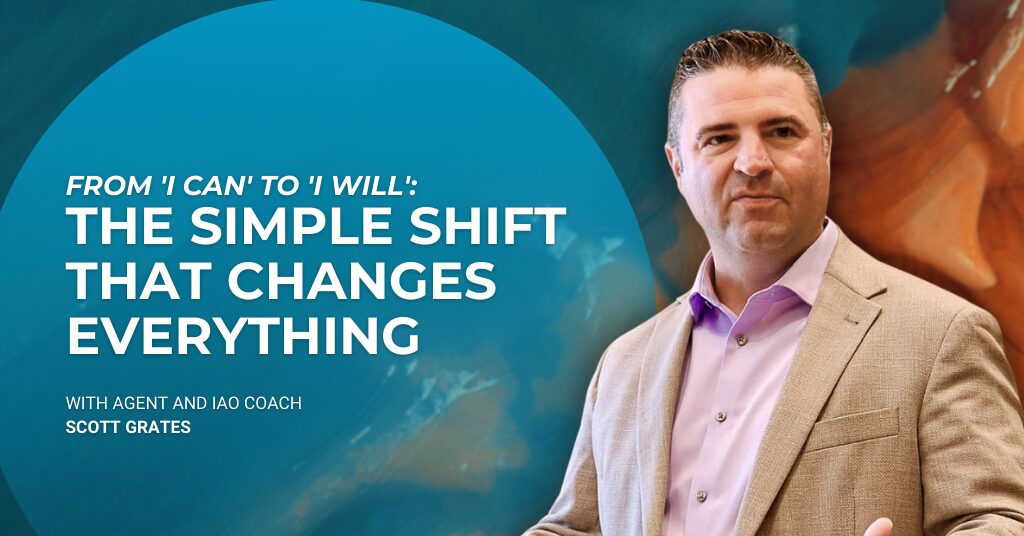
Who wants to sell more insurance? If you are in the insurance business and you’re reading this, the answer is an undoubtable, YES!
Of course there is more than one strategy to sell more insurance. In this article we’re focusing one perhaps one of the simplest: to sell more, you have to ask more.
If you’re serious about increasing your sales, you’ve got to be willing to ask for them. Let’s walk through some key ideas on when and how you can ask more.
The Power of Persistence
I always tell my team this phrase: “Reach out until they buy, die, or tell us to go fly.” This means we don’t give up on a prospect until one of these three things happens:
- They buy the insurance.
- They pass away (not the outcome we hope for, but it happens).
- They tell us to stop contacting them—politely or not.
Example: Let’s say you’re working with a potential customer named Sarah. She’s shown some interest, but you’ve called her three times, and she still hasn’t made a decision. Most salespeople would stop here, thinking Sarah doesn’t want the insurance. But here’s the thing—90% of all sales happen after the 10th contact or later. That means if you stop after just three tries, you’re leaving a lot of potential sales on the table.
Instead, you keep calling Sarah, leaving polite and professional messages. Maybe she’s busy or dealing with personal issues and hasn’t had time to decide. On your 11th attempt, Sarah finally picks up the phone, thanks you for following up, and purchases a policy. Persistence paid off!
Don’t Take Rejection Personally
When a customer hangs up on you, it’s easy to feel frustrated or even embarrassed. But here’s the truth: it’s usually not personal.
Example: Let’s say you call John during dinner, and he hangs up on you without even listening. Your first thought might be, “He hates me!” or “He never wants to hear from me again!” But in reality, John was probably just annoyed that you interrupted his family time. Maybe he was dealing with a stressful workday and didn’t have the energy to talk about insurance right then.
If you follow up with John at a better time, he might be more open to hearing your offer. Too many salespeople stop after that first bad interaction, but remember, it’s not about you—it’s about the timing. Give it another shot when the moment feels right.
How to Categorize Your Opportunities
When reaching out to clients, it helps to categorize your opportunities. This will make your follow-ups more organized and strategic. Here’s how to break it down:
1) Not Now, Follow-Up: The client isn’t ready to buy right now, but they haven’t ruled it out. Your job is to set up a future follow-up, whether that’s in a week, a month, or even a year.
Example: Imagine you’re working with Lisa, who says she’s interested in a Life insurance policy but is waiting for her annual work bonus before making any big purchases. You note this and set a reminder to follow up with Lisa after her bonus hits. You don’t just leave it at “maybe.” You’ve got a plan to call her back at the right time.
2) Quoting Stage: You’re actively working with the client, providing quotes, and discussing their needs. But remember—always set a follow-up to keep the conversation going.
Example: You’re working with a client named Mike who has requested quotes for different life insurance policies. You send him the information and follow up in a couple of days to see if he has any questions. Mike appreciates the promptness and the follow-up, and it helps move the conversation forward. Without the follow-up, Mike might forget or delay his decision.
3) Not Interested, “Go Fly”: This is when the client gives a hard “no.” They’re not interested, and they don’t want you to follow up anymore.
Example: After several conversations with Emma, she decides that she’s just not interested in purchasing insurance at this time. She tells you outright, “Please don’t contact me again about this.” You respect her decision, mark her as “not interested,” and move on. There’s no need to waste time chasing a dead lead.
These categories help you stay on top of your leads and focus on the ones that are worth your time.
Focus on the Right Stage
If you’re managing a team, these categories can help you identify where your team members need the most support.
- Not Now, Follow-Up: If many of your team’s leads are in this stage, they might need help overcoming objections.
Example: Maybe your team member, Sarah, keeps hearing, “I’m not ready to decide right now.” Instead of letting those leads go cold, you can train Sarah on ways to respond, like saying, “I completely understand! When would be a better time to follow up?” This keeps the conversation open and makes the follow-up more strategic.
- Quoting Stage: If many leads are stuck here, it’s time to focus on product knowledge to help close the sale.
Example: Let’s say Josh, one of your agents, has a lot of clients requesting quotes but isn’t closing the deals. It could be that he doesn’t know how to clearly explain the benefits of the product or answer key questions. By working with Josh on his product knowledge, you help him turn those quotes into sales.
- Not Interested, “Go Fly”: If leads frequently end up here, your team might need better training on both product knowledge and overcoming objections.
Example: Suppose Rachel is getting a lot of “no” responses after the first pitch. This could mean she needs better objection-handling skills, like learning how to dig deeper into a client’s concerns. It could also mean she’s not explaining the value of the product well enough.
Your Next Step? Make the Ask.
So where are you lacking? Is it overcoming objections? Is it knowing your products inside and out? At IAO, we’re here to help you with those things in order to sell more insurance. But if your problem is a lack of asking, that’s something only you can fix.
You may have a strong grasp of the product and can handle objections like a pro, but if you’re not asking enough people, you’ll never hit your sales goals. You need to commit to making the ask—every single day.
Decide today that the ask won’t be the problem. Start creating opportunities, and commit to getting better at overcoming objections, knowing your products, and making those all-important pivots in the conversation.
The more you ask, the more you sell. It’s that simple.




